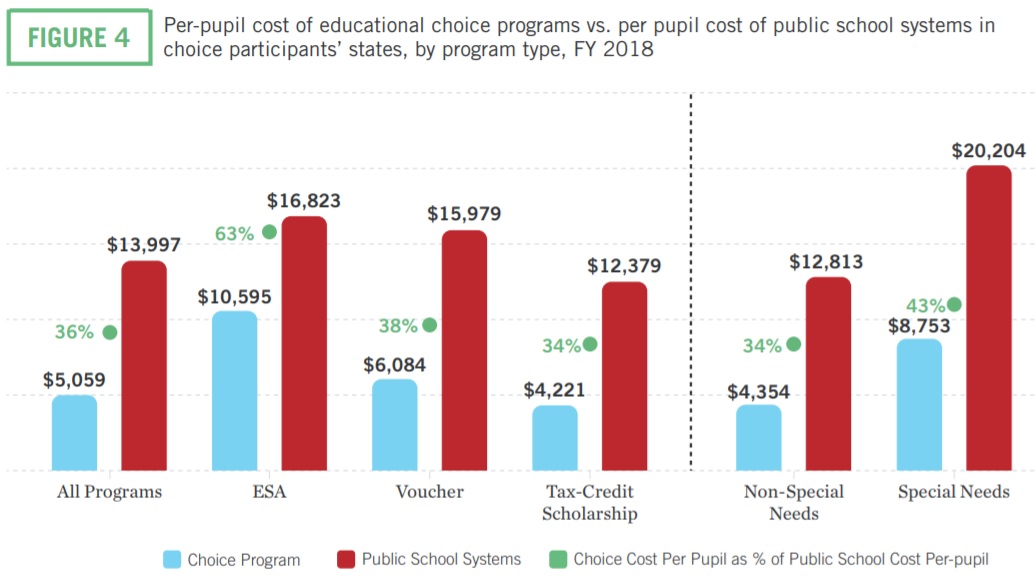I wrote two days ago about how the Supreme Court will be ruling in the next few months on a very important school-choice case, involving whether state and local governments should be allowed to discriminate against religious schools.
As part of that column, I mentioned that “government school systems cost a lot of money and do a bad job.”
Some readers emailed me and expressed disbelief. The common message was that private schools surely had to be more expensive.
There are some very costly private schools, to be sure, but the data clearly show that government schools, on average, consume a lot more money.
I want to build on this message today by calling everyone’s attention to a great report by Martin F. Lueken of edChoice.
Here are some of the key findings from the executive summary.
This study estimates the combined net fiscal effects of each educational choice program on state and local taxpayers… Through FY 2018, the 40 educational choice programs under study generated an estimated $12.4 billion to $28.3 billion in cumulative net fiscal savings for state and local taxpayers. This range represents $3,300 to $7,500 per student participant. …Educational choice programs generated between $1.80 to $2.85 in estimated fiscal savings, on average, for each dollar spent on the programs. These savings result from many of the students who exercised choice who would have been enrolled in a public school if these choice programs did not exist—and enrolled in public schools at a much larger taxpayer cost.
The report is packed with lots of data, including state-by-state estimates of how different choice programs save money.
But if you’re going to digest one set of numbers, Figure 4 tells you just about everything you need to know.

And remember, when you look at these cost comparisons, that private schools produce better outcomes, as measured by student achievement.
P.S. Here’s a must-see chart showing how more and more money for the government school monopoly has produced zero benefit.
———
Image credit: Gage Skidmore | CC BY-SA 2.0.



